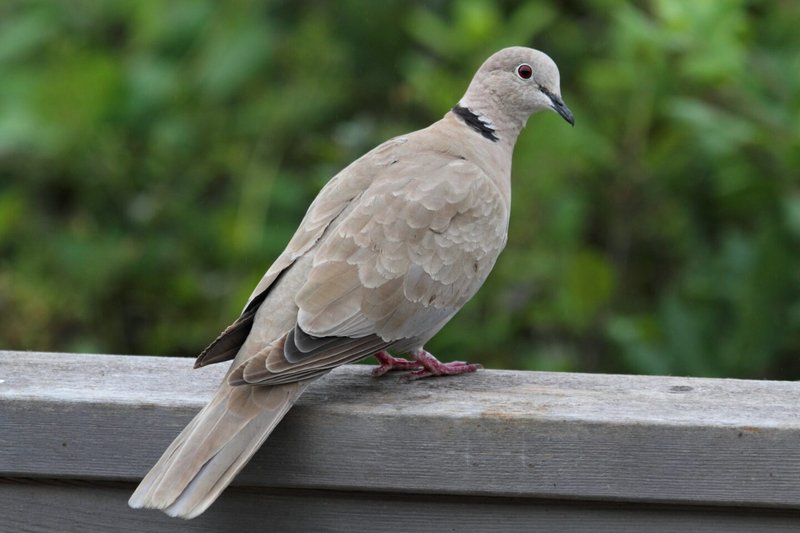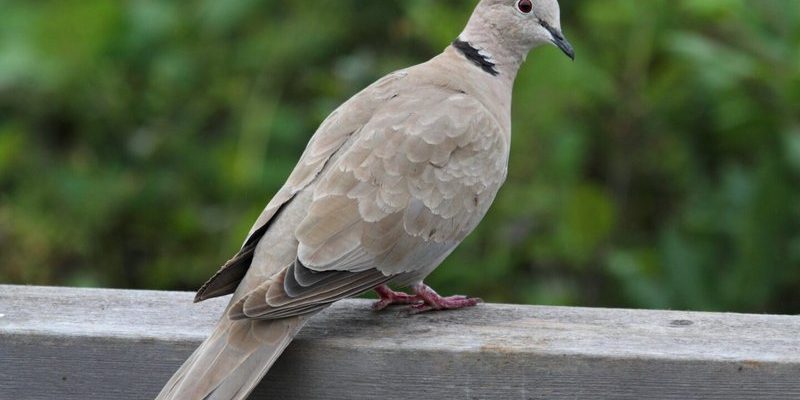
Imagine sitting in a cozy café, sipping your coffee, and watching these doves hop around, pecking at their meals. How they hunt or forage for food can be as intriguing as what’s on their menu. From seeds to fruits, Eurasian Collared Doves have a diverse diet. Let’s dive deeper into what these birds eat and the ways they gather their meals!
What Do Eurasian Collared Doves Eat?
Eurasian Collared Doves are granivorous, which is a fancy way of saying they primarily eat seeds. Their love for grains makes them quite common in areas where agricultural activities take place. They’re often found in gardens, fields, and urban settings, scavenging for a tasty bite.
- Seeds: These doves are especially fond of sunflower seeds, millet, and sorghum. You might find them jogging through a backyard bird feeder, munching happily.
- Fruits: Occasionally, they enjoy fruits, especially when seeds are inside. Grapes and berries are often on the menu, providing a refreshing treat.
- Vegetables: While not their first choice, they sometimes nibble on tender greens or leftover garden veggies.
Honestly, their eating habits show how adaptable they are. You might be wondering how they manage to thrive in different environments, and it all comes down to their flexible diet.
How Do They Forage?
Foraging for food is an essential part of the Eurasian Collared Dove’s daily routine. They use their keen eyesight to spot potential meals from a distance. When they see food, they hop down from their perches, often landing gracefully on the ground to investigate.
Interestingly, these doves often have a unique method of checking out their food sources. They’ll walk around, bobbing their heads as they scan the ground for seeds or crumbs. It’s a cute little dance that they do while staying alert for predators. That said, they have to be careful; even though they’re charming, they aren’t the fastest flyers.
In urban areas, you might notice them hanging around parks or bird feeders, waiting for their next meal. They can be quite social, often seen foraging together in groups, which offers them some safety in numbers. This behavior helps them spot danger more quickly.
The Role of Seasonality in Their Diet
As the seasons change, so do the food sources for the Eurasian Collared Dove. In spring and summer, when seeds and fruits are abundant, these doves can easily find what they need. Their diet becomes diverse and plentiful, making it an exciting time for them.
However, during fall and winter, the search for food can be more challenging. As plants die down, these doves rely more on stored seeds and the leftovers from human activities. They often scavenge in gardens and parks where people feed birds or leave food scraps. It’s a reminder of how adaptable they are.
You might see them grouping up more during colder months, helping each other find food. This social behavior not only assists in locating meals but also provides warmth as they huddle together.
Hunting Techniques of Eurasian Collared Doves
While Eurasian Collared Doves are primarily foragers, they do employ tactics that resemble hunting behaviors at times. When they spot seeds from a distance, they use their quick reflexes to dart down and snatch it up before other birds can get to it.
Their mobbing behavior is quite interesting too, especially when they feel challenged by other birds. They might gather in groups and work together to scare off potential threats or competitors. This technique ensures they have access to food without too much interference.
You know how it feels to share a meal among friends? That’s how these doves seem to operate. By banding together, they create a safer environment where everyone gets a chance to enjoy their favorite seeds.
Understanding Their Feeding Behavior
Eurasian Collared Doves typically feed at dawn and dusk, similar to many birds. This timing helps them take advantage of quieter moments when predators are less active. They often return to the same feeding spots daily, learning the best locations for food.
When eating, they tend to pick up a seed, toss it back, and swallow it whole. You might notice their small but efficient movement as they consume their meals. It’s almost as if they have a well-rehearsed routine that makes feeding quick and easy.
Additionally, they have a unique way of storing food. They often pick up more seeds than they can eat in one go, hiding some for later. This behavior doesn’t just sustain them; it also aids in spreading seeds across their territory, helping plants grow in the long run.
Feeding Challenges: What Do They Face?
Eurasian Collared Doves, while adaptable, face challenges when it comes to food. One of the primary issues is habitat loss. As cities expand and natural food sources diminish, these birds might have to compete harder for available seeds.
Additionally, weather can impact their food sources. Harsh winters or unseasonably dry summers can make it difficult for them to find their preferred meals, forcing them to adapt quickly. It’s a constant reminder of nature’s unpredictability, even for these resilient birds.
You might see them venture into more urban areas during such times, scavenging for leftovers around parks or even at outdoor cafés. Sometimes, they become quite familiar with humans, often waiting for handouts from anyone willing to share a little food.
Overall, the life of a Eurasian Collared Dove is centered around adaptability and resourcefulness. They have a diverse diet, relying on a combination of seeds, fruits, and even the occasional veggie. Their foraging behaviors and social interactions not only help them find food but also create a sense of community among them.
Whether you’re watching them from your backyard, in a park, or even on a city street, it’s clear that Eurasian Collared Doves play a vital role in their ecosystems. They remind us of the beauty of nature and the simple pleasures of life, like a good meal shared among friends. So next time you see one, take a moment to appreciate all the hard work that goes into finding food and thriving in changing environments.

